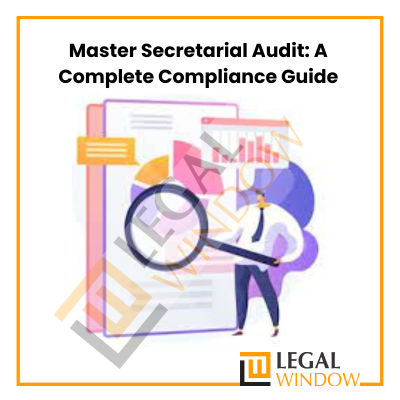
Rules and regulations are systematic way to do any kind of work, and Articles of Association (AOA) is a rule book for the functioning of the company. AOA contains all rules and targets of the company which one must stick to it. AOA has formed at time of incorporation of the company. These regulations are for the internal functioning of a company. There are two significant forms of documents, which provides the company’s targets and lead the operation of the company and its internal and director’s affairs. These significant documents are Memorandum of Association (MOA) and Articles of Associations (AOA). In this article, we are going to discuss about the Article of Association and Alteration in AOA.
| Table of Content |
Glimpses of AOA
An AOA is a legal document that outlines the rules, regulations, and procedures for the governance of a company. It is one of the key documents that form a company’s constitution and sets out the company’s internal management structure, rights, and responsibilities of shareholders, directors, and other officials. The AOA provides guidelines for decision-making processes, the issuance of shares, transfer of shares, appointment and removal of directors, and other important matters related to the management and operation of the company.
Definition of AOA as per Companies Act, 2013
The Companies Act, 2013 provides the following definition of AOA in Section 2(5) of the Act: “Articles of Association” means the articles of association of a company as originally framed or as altered from time to time or applied in pursuance of any previous company law or of this Act.
This definition states that the AOA refers to the articles of association of a company as originally framed or as altered from time to time or applied in pursuance of any previous company law or the current Companies Act, 2013. The AOA is a legal document that sets out the company’s internal management structure, ownership, and control, as well as the rights and responsibilities of shareholders, directors, and other officials. It plays a critical role in the governance of the company and must be in compliance with the legal framework and regulations governing the establishment and operation of companies in India.
What is the Purpose of the Company to make AOA?
The main purpose of forming AOA is to provide a legal framework for the internal management and governance of a company. It sets out the rules and regulations governing the relationship between the company and its members, as well as the relationship among the members themselves.
The AOA outlines the company’s objectives, powers, and limitations, as well as the procedures for conducting meetings, voting, and making decisions. It also defines the rights and responsibilities of the company’s directors, officers, and shareholders.
By forming AOA, the company can ensure effective management, protection of stakeholders’ interests, and compliance with regulatory requirements. It provides clarity on the company’s objectives and governance structure, which can help in attracting investors and business partners.
Information contains by AOA
The information contained by AOA typically includes:
- Name Clause: It specifies the name of the company, which must be unique and distinguishable from other companies.
- Registered Office Clause: It specifies the location of the registered office of the company, which is the official address of the company for all communications.
- Object Clause: It specifies the objects or purposes for which the company is established and authorized to operate. The object clause may be specific or general, depending on the company’s nature and scope of operations.
- Share Capital Clause: It specifies the amount and types of share capital authorized by the company, as well as the rights and privileges attached to each class of shares.
- Liability Clause: It specifies the liability of the members or shareholders of the company, which may be limited or unlimited.
- Membership Clause: It specifies the conditions for becoming a member or shareholder of the company, as well as the rights and obligations of members.
- Management Clause: It specifies the powers and duties of the board of directors and other officers of the company, as well as the procedures for appointment and removal of directors.
- Meetings Clause: It specifies the procedures for calling, holding, and conducting meetings of shareholders and directors.
- Voting Clause: It specifies the rules for voting at meetings of shareholders and directors, including the rights of different classes of shareholders.
- Dividend Clause: It specifies the policies and procedures for declaring and paying dividends to shareholders.
- Winding-up Clause: It specifies the procedures for winding up or dissolution of the company, including the appointment of liquidators and distribution of assets to creditors and shareholders.
The above information contained in the AOA provides a framework for the governance and management of the company, ensuring that it operates in a transparent and efficient manner while protecting the interests of its stakeholders.
Alterations of AOA
Brief about alterations of AOA: The Alteration of AOA refers to the process of amending or modifying the company’s existing AOA. This can be done to keep the AOA in line with the company’s changing needs and objectives, to address any legal or regulatory changes, or to reflect changes in the ownership or management structure of the company. The alteration of AOA can be done through a special resolution passed by the company’s shareholders or by the board of directors, depending on the company’s articles.
What is the process for the Alteration in AOA?
The process for the alteration of AOA of a company under the Companies Act, 2013, includes the following steps:
- Board Meeting: The first step is to convene a meeting of the Board of Directors of the company to discuss the proposed alterations to the AOA. The Board must pass a resolution approving the proposed alterations.
- Shareholder Meeting: The company must then call for a general meeting of its shareholders to consider and approve the alterations to the AOA. A notice of the meeting, along with the proposed alterations, must be sent to all shareholders at least 21 days before the meeting. The notice must also contain an explanatory statement explaining the reasons for the proposed alterations.
- Passing of Special Resolution: At the general meeting, a special resolution must be passed by the shareholders, approving the alterations to the AOA. A special resolution requires the affirmative vote of at least three-fourths of the shareholders present at the meeting or by proxy.
- Filing of Form MGT-14: Within 30 days of passing the special resolution, the company must file Form MGT-14 with the Registrar of Companies (ROC). The form must include a copy of the special resolution, the altered AOA, and other required documents.
- Approval by the ROC: The ROC will examine the documents filed by the company and may approve or reject the alterations made to the AOA. If the ROC approves the alterations, it will issue a Certificate of Registration of the Special Resolution.
- Update the Company’s Records: Once the alterations are approved by the ROC, the company must update its records, including the AOA and other internal documents, to reflect the changes made.
Impact of Alteration in AOA
The impact of alterations made to the AOA of a company can be significant and may affect various aspects of the company’s operations. Here are some of the potential impacts of alterations in AOA:
- Change in Objectives: Alterations to the AOA may change the company’s objectives, which can affect the direction of its business operations. This may impact the company’s stakeholders, including shareholders, employees, and customers.
- Change in Shareholder Rights: Alterations to the AOA may impact the rights of shareholders, such as voting rights, dividend entitlements, or preference rights. This may impact the value of their shares and their overall investment in the company.
- Change in Management Structure: Alterations to the AOA may change the structure of the company’s management, including the powers and responsibilities of the Board of Directors and other key personnel. This may impact the company’s decision-making process and overall management efficiency.
- Change in Governance: Alterations to the AOA may impact the company’s governance policies and procedures. This may impact the company’s reputation and stakeholder confidence.
- Legal Compliance: Alterations to the AOA must comply with the Companies Act, 2013, and other applicable laws and regulations. Any non-compliance may result in legal penalties and damage the company’s reputation.
It is essential for the company to carefully consider the potential impacts of alterations to the AOA and to ensure that the process is carried out in compliance with the relevant laws and regulations. Companies should also communicate the proposed alterations to its stakeholders and seek their input to ensure that their interests are adequately protected.
Takeaway
Through this article, it is concluded that AOA is vital for companies and any alteration is made in compliance with the legal requirements and the company’s MOA. By adopting and amending AOA as per the needs of the company, it can ensure effective management, protection of stakeholders’ interests and compliance with regulatory requirements. If you have any quires related to this topic, you are free to contact with professionals of Legal Window. The team would love to resolve all your issues regarding the same
Neelansh Gupta is a dedicated Lawyer and professional having flair for reading & writing to keep himself updated with the latest economical developments. In a short span of 2 years as a professional he has worked on projects related to Drafting, IPR & Corporate laws which have given him diversity in work and a chance to blend his subject knowledge with its real time implementation, thus enhancing his skills.
Categories
- Agreement Drafting (23)
- Annual Compliance (11)
- Change in Business (36)
- Company Law (148)
- Compliance (90)
- Digital Banking (3)
- Drug License (3)
- FEMA (17)
- Finance Company (42)
- Foreign Taxation (6)
- FSSAI License/Registration (14)
- GST (118)
- Hallmark Registration (1)
- Income Tax (200)
- Latest News (34)
- Miscellaneous (164)
- NBFC Registration (8)
- NGO (14)
- SEBI Registration (6)
- Section 8 Company (7)
- Start and manage a business (21)
- Startup/ Registration (130)
- Trademark Registration/IPR (40)
Recent Posts
- NGO Darpan Registration in Jaipur May 2, 2024
- Registration of Charges with ROC May 1, 2024
- Post incorporation compliances for companies in India April 30, 2024
About us
LegalWindow.in is a professional technology driven platform of multidisciplined experts like CA/CS/Lawyers spanning with an aim to provide concrete solution to individuals, start-ups and other business organisation by maximising their growth at an affordable cost.









